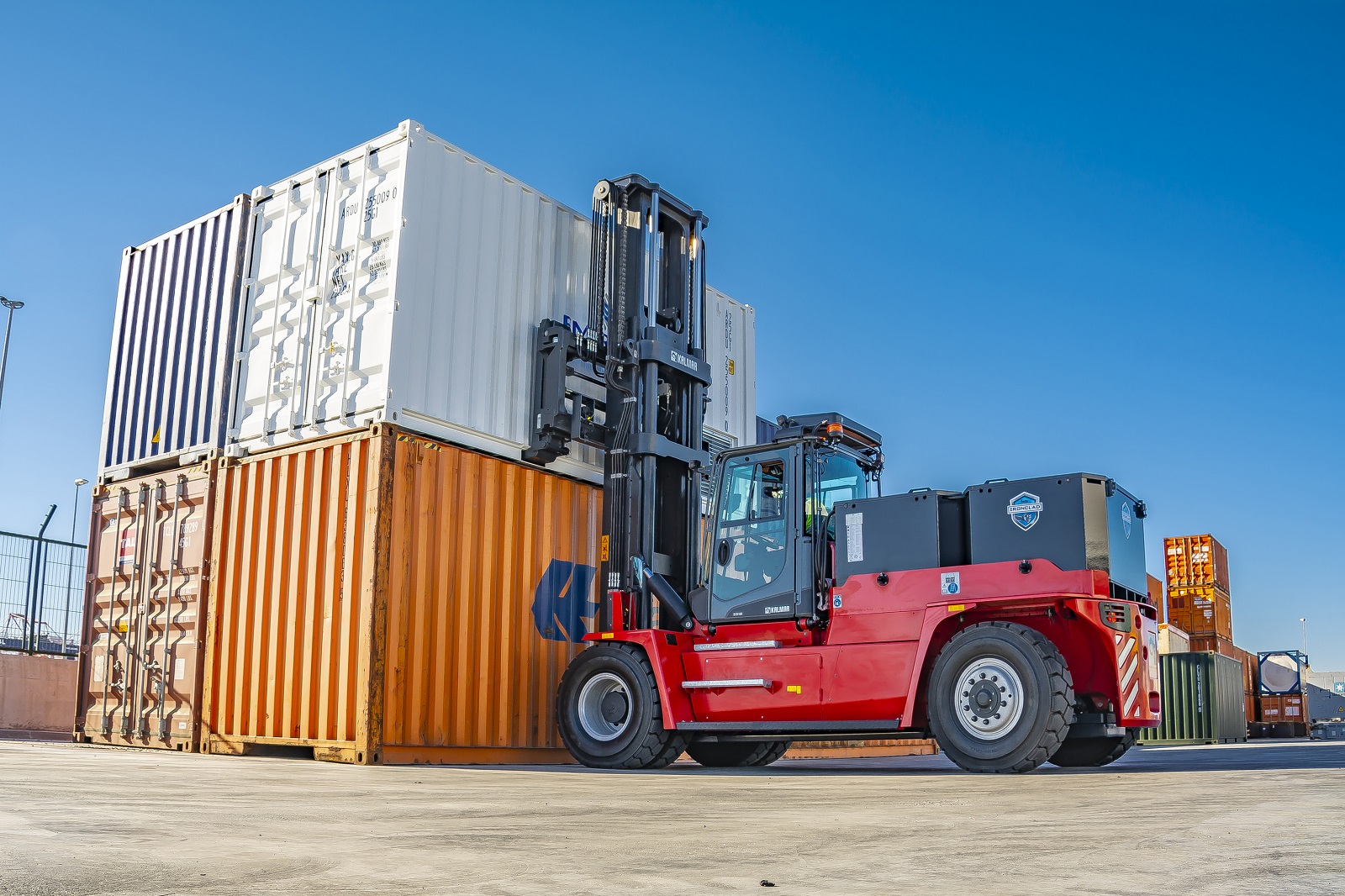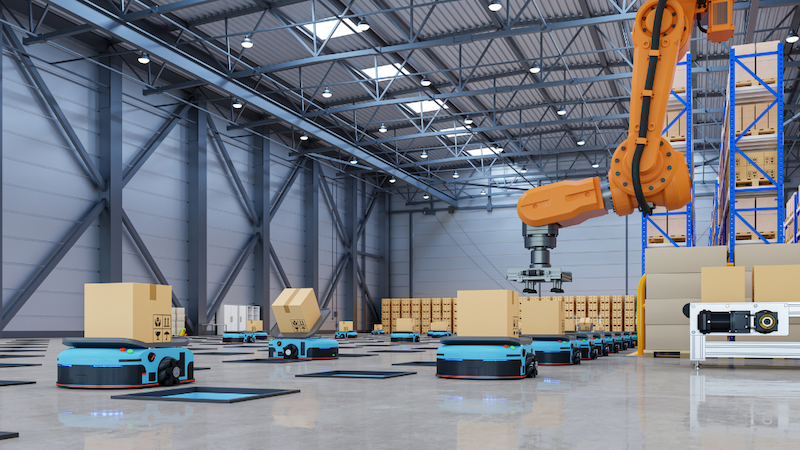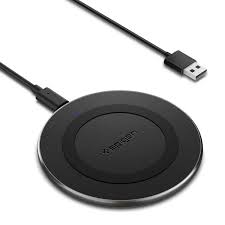Future-Forward Forklifts: Innovations Reshaping Logistics

Strong 8k brings an ultra-HD IPTV experience to your living room and your pocket.
Introduction:
The logistics industry is undergoing a significant transformation as it adapts to the demands of modern commerce, and forklifts are at the heart of this change. In the fast-paced environment of warehouses, distribution centers, and manufacturing plants, forklifts are critical for efficiently moving goods. However, as the industry seeks higher levels of productivity, safety, and sustainability, forklifts are becoming more advanced, incorporating cutting-edge technologies to optimize operations.
One of the most notable developments in forklift technology is the integration of wearable technology for forklift operators. Wearables have the potential to augment human capabilities, improving safety, efficiency, and decision-making. These devices work in conjunction with advanced forklifts, creating a more seamless and effective operation that meets the growing demands of logistics. From smart glasses and gloves to wearable sensors and exoskeletons, these innovations are reshaping the future of forklifts in the logistics industry.
In this article, we’ll explore how wearable technology is enhancing forklift operations and the broader logistical process, offering operators new tools to stay safer, smarter, and more efficient in their roles.
The Role of Forklifts in Modern Logistics
Forklifts have long been essential to material handling in logistics operations, primarily used for lifting and transporting goods across short distances. Traditionally, forklifts were designed for simple tasks like lifting pallets, stacking, and moving items in and around warehouses. However, the rising expectations of industries like eCommerce, retail, and manufacturing demand that forklifts work faster and more efficiently than ever before. This has led to major advancements in forklift technology.
Today’s forklifts are increasingly integrated with automation, real-time data analytics, and smart technology to enhance operational performance. Some of these advancements include electric-powered forklifts, autonomous machines, and smart forklifts with IoT connectivity that help monitor battery life, detect maintenance needs, and optimize routes.
But perhaps one of the most significant areas of forklift innovation is wearable technology. By enhancing human capabilities, wearables allow operators to perform their tasks with greater precision, safety, and speed, addressing some of the challenges posed by the industry’s rapidly evolving landscape.
Wearable Technology in Forklift Operations: Enhancing Human Capability
Wearable technology refers to devices worn on the body, often designed to assist workers by providing real-time information, monitoring their health, or improving their physical capabilities. In forklift operations, wearables can be integrated with forklifts and warehouse systems to optimize workflow, increase safety, and prevent accidents. Wearable devices can provide operators with hands-free, real-time access to critical data, alert them to potential hazards, and even enhance physical strength and endurance.
Let’s take a deeper dive into some of the most innovative wearable technologies for forklift operators.
1. Smart Glasses: Augmenting Visual Awareness and Efficiency
Smart glasses are wearable devices that provide operators with augmented reality (AR) capabilities, overlaying digital information onto the real world. These glasses can display crucial data directly in the operator’s line of sight, eliminating the need to take their eyes off the task at hand. This technology is particularly useful for forklift operators, who often need to make split-second decisions while navigating through busy warehouse environments.
Benefits of Smart Glasses:
Hands-Free Access to Information: Smart glasses allow operators to view essential data, such as inventory levels, warehouse layout maps, and item location details, without needing to consult handheld devices or stop the forklift. This hands-free experience keeps operators focused on the task, reducing the risk of accidents and improving efficiency.
Augmented Reality for Enhanced Navigation: With the help of AR, smart glasses can display real-time navigation assistance, helping forklift operators follow the most efficient routes and avoid obstacles in their path. These augmented paths are especially valuable in large warehouses, where the sheer size of the environment can make navigation more challenging.
Improved Communication: Some smart glasses include integrated communication systems that allow operators to communicate with warehouse managers and colleagues in real time. This eliminates delays caused by waiting for radio messages or physically going to check on tasks.
By providing operators with critical data without distraction, smart glasses boost operational efficiency and reduce the likelihood of errors.
2. Wearable Sensors: Real-Time Monitoring of Forklift Operations
Wearable sensors are devices that can be worn on the operator’s body to track various physical metrics and movement patterns. These sensors can provide valuable feedback to forklift operators, helping them monitor their posture, alertness, and even stress levels. Sensors are also being used to monitor the forklift itself, gathering real-time data on how well the machine is performing and how efficiently it’s operating.
Benefits of Wearable Sensors:
Enhanced Safety: Wearable Sensors can detect dangerous operator behaviors or unsafe movements, such as lifting with poor posture or sudden jerks that may lead to injury. In turn, they can alert operators to correct their posture or slow down, preventing accidents and strain injuries.
Download FREE Sample of Sensors Market
Fatigue Monitoring: Some wearable sensors are designed to detect signs of fatigue or reduced alertness in forklift operators. These sensors can track changes in physical activity, such as swaying or poor posture, and send an alert to operators or supervisors to prevent accidents caused by fatigue.
Predictive Maintenance: Sensors integrated into the forklift can monitor the health of the vehicle, detecting signs of wear and tear that may require maintenance. These systems can alert operators to potential issues before they lead to costly repairs or unexpected downtime.
By providing real-time data about both the operator and the machine, wearable sensors enhance safety and promote more efficient operations.
3. Exoskeletons: Augmenting Strength and Reducing Operator Fatigue
Exoskeletons are wearable devices that are designed to assist the user by augmenting their physical capabilities. In forklift operations, exoskeletons can help reduce the physical strain on operators who are required to lift heavy objects or perform repetitive tasks. These devices are equipped with motors, sensors, and actuators that enhance the operator’s strength and endurance while reducing the risk of musculoskeletal injuries.
Benefits of Exoskeletons in Forklift Operations:
Reduced Risk of Injury: Exoskeletons reduce the strain on operators' joints, muscles, and spine by distributing weight more evenly and supporting movements that require lifting or repetitive motions. This reduces the likelihood of injury, such as back pain, which is a common issue among forklift operators.
Increased Productivity: By augmenting physical strength, exoskeletons allow operators to lift heavier items with less effort, improving overall productivity. They enable workers to handle tasks more efficiently without the need for frequent breaks or downtime.
Enhanced Comfort: Forklift operators working in physically demanding environments often suffer from fatigue, discomfort, and strain. Exoskeletons help alleviate these issues by providing additional support, making it easier for workers to stay on task for longer periods without experiencing discomfort.
Exoskeletons represent a step toward a more ergonomically sound and sustainable working environment, allowing operators to perform their duties with less strain and greater comfort.
4. Wearable Smart Gloves: Improving Dexterity and Handling
Wearable smart gloves are another innovative technology that can enhance the capabilities of forklift operators. These gloves are equipped with sensors and haptic feedback systems, which provide tactile information to the operator's hands, improving their ability to handle loads and operate machinery. Smart gloves can also collect data on the operator’s performance and send real-time feedback to supervisors for continuous improvement.
Benefits of Smart Gloves:
Improved Dexterity and Grip: Wearable smart gloves can enhance the operator's ability to grasp and handle loads more precisely. Sensors in the gloves provide real-time feedback on grip strength, helping operators maintain control over items, reducing the risk of drops or damage.
Real-Time Data Collection: Smart gloves can track metrics such as grip force, hand position, and movement. This data can be used to improve operator performance and optimize the way goods are handled, ensuring that tasks are completed more efficiently.
Enhanced Communication: Some smart gloves feature haptic feedback, which can alert operators to changes in the warehouse environment, such as a signal to stop or change direction. This hands-free communication system makes it easier for operators to stay focused on their tasks without needing to rely on verbal cues or radio messages.
By improving dexterity and providing feedback, smart gloves help operators handle goods with greater accuracy, ensuring safe and efficient forklift operations.
The Future of Forklifts and Wearable Technology in Logistics
As the logistics industry continues to evolve, so too will the technology that supports forklift operations. The integration of wearable devices is just one of many innovations transforming how logistics companies manage their warehouses and distribution centers. Wearables not only improve forklift efficiency but also promote greater safety and worker well-being.
As eCommerce and global supply chains continue to demand faster, more efficient operations, the integration of wearable technologies will likely become the norm in warehouses across the world. These advancements will help operators manage the physical demands of their roles, while also streamlining forklift operations and reducing human error.
Conclusion
Wearable technology is revolutionizing forklift operations by augmenting human capabilities, enhancing safety, and improving overall productivity in the logistics industry. Smart glasses, wearable sensors, exoskeletons, and smart gloves are just the beginning of a broader trend toward smarter, safer, and more efficient warehouses. As the logistics industry continues to face new challenges, the integration of these wearables will play a key role in meeting the demands of modern commerce, ensuring that forklift operators are equipped with the tools they need to succeed in a rapidly changing environment.
Read the complete blog
Note: IndiBlogHub features both user-submitted and editorial content. We do not verify third-party contributions. Read our Disclaimer and Privacy Policyfor details.







